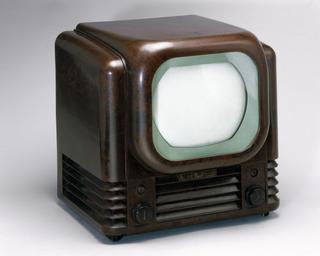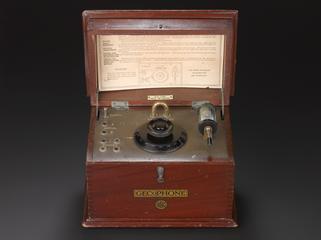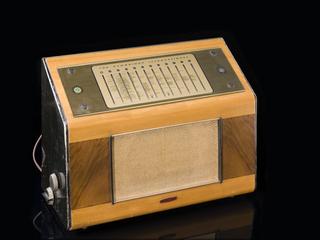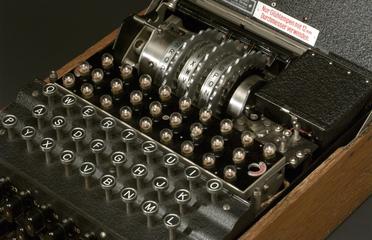



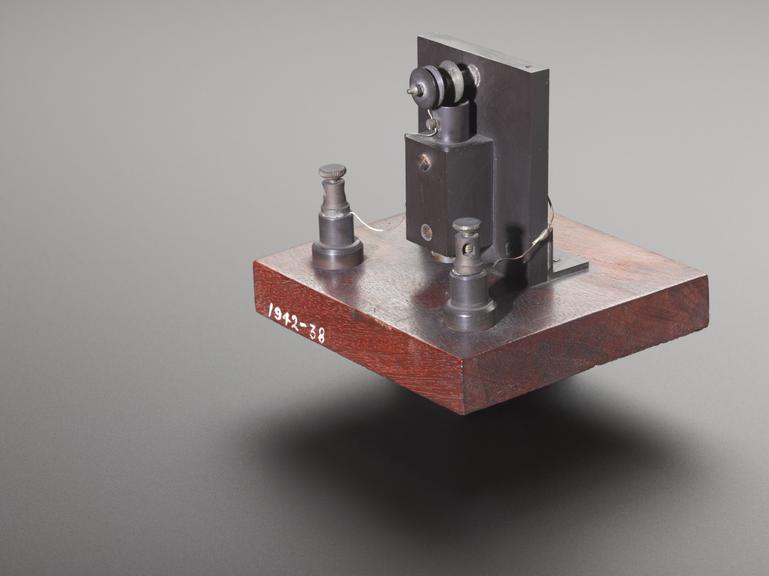
Original wheel or steel-disc coherer (thin-film detector), made by E E Robinson, England, 1902. Made for Oliver Lodge and Alexander Muirhead
Original wheel or steel-disc coherer (thin-film detector), made by E E Robinson, England, 1902.
By the time that the wheel, or thin-film detector, was developed in 1902, the term 'coherer' was being applied to all types of detector, whether or not they utlised materials which 'cohered' in the presence of Hertzian waves. Edward Robinson, Oliver Lodge's assistant, was principally responsible for devising this detector. The steel disc, with a sharp edge, rotates continuously and dips into a small pool of mercury covered with a thin film of oil. When Hertzian waves are detected the disc makes contact with the mercury and as the disc rotates a fresh surface is continuously being presented to the mercury. It is therefore described as being self-cohering - that is, not requiring a series of mechanical jolts to reset it. This is one of Robinson's bench-top prototypes.
Details
- Category:
- Radio Communication
- Object Number:
- 1942-38
- Materials:
- wood (unidentified), brass (copper, zinc alloy) and bakelite
- Measurements:
-
overall: 80 mm x 100 mm x 95 mm, .18 kg
- type:
- coherer
- credit:
- Donated by E. E. and T. H. Robinson

